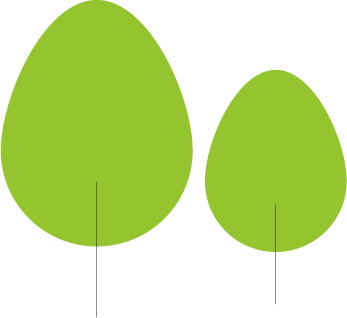
Replacement cost and auto insurance: what’s on your policy?


In the event of a fender bender, collision or theft, your auto insurance policy is based on the value of your vehicle at the time of the loss. However, due to wear and tear, it may be less than the purchase price of a new vehicle and may not be enough to replace it. Here’s how a replacement cost coverage covers your vehicle as it was the first day you bought or leased it.
In Quebec, auto insurance policies are standard, and all drivers must at least have civil liability insurance. Many drivers add optional coverage for specific risks such as collision, theft or vandalism. You can also take out coverages to obtain, after a loss, compensation that doesn’t factor in your vehicle’s depreciation.
Replacement cost endorsement
Available from your insurer, Endorsement Q.E.F. No. 43 (A to F) changes your insurance policy’s payment conditions.
Total loss vehicle replacement or cash compensation (Option 43E)
When the cost of repairs is greater than your vehicle’s value, your insurer usually declares the vehicle a “total loss.” Option 43E from the Endorsement Q.E.F. No. 43 offers three options:
- Replacement by a new automobile having the same specifications, equipment and accessories.
If such a vehicle isn’t available, replacement with a similar new model is also possible. The compensation your insurer pays is the price of the same or a similar vehicle, as the case may be. - Replacement by a new automobile other than that described in option A or by a used automobile.
The compensation your insurer pays is the greater of the price of the replacement automobile (new or used) and the price paid for the purchase of your total loss automobile.
Please note: Compensation for option 2 can never exceed the amount that would have been paid out with option 1.
- Cash compensation according to the marked-up price paid.
There is no requirement to replace your vehicle. You can ask to be compensated in cash according to the marked-up price paid*. This option corresponds to the price paid to purchase your vehicle, increased by an annually compounded percentage, calculated in proportion to the number of days elapsed between the date of the vehicle purchase contract and the date of the total loss or total constructive loss (the percentage correspond to the consumer price index (CPI) for the automobile sector).* Option in force since January 15, 2025, Autorité des marchés financiers.
Partial loss and repairs (Options 43A and 43B)
In the event of a collision or loss, the value of damages is based on the cost of new original manufacturer parts. There is no deduction for depreciation. The vehicle must be repaired for such protection to apply.
Replacement insurance
The Q.P.F. No. 5 policy is separate coverage that complements your auto insurance policy. You can get it from an insurance company or your car dealership.
Mandatory replacement of the total loss vehicle
In the event of a total loss, here’s how replacement insurance works to complement your primary auto insurance:
- Under your Q.P.F. No. 1 policy, you’ll first receive a payment equivalent to the value of your vehicle at the time of loss.
- The Replacement insurance policy (Q.P.F. No. 5) provides for sufficient compensation to replace your original vehicle with a new one having the same specifications and equipment.
If you have replacement insurance, you may receive compensation from two insurers: the one from whom you purchased the Q.P.F. No. 1 and the one who sold you the Replacement insurance (Q.P.F. No. 5).
If no replacement vehicle is available, you may choose an equivalent model as per Q.P.F No. 5 terms. The replacement insurance compensation is then adjusted based on the value of this equivalent model.
If the price of the selected vehicle is less than the value of an identical or equivalent vehicle, the compensation will only be equal to the price you paid. If it’s greater, you will have to pay the difference.
Please note: You must provide proof of replacement to receive your compensation. Unlike with the Replacement Cost Endorsement (Q.E.F. No. 43 [A to F]), you can’t receive compensation without replacing your vehicle.
Partial loss and repairs
As long as your insurer considers your vehicle repairable, this replacement insurance stays the same as Option 43A – Replacement Cost Endorsement. The damage appraisal is based on the cost of the manufacturer’s original parts without factoring in depreciation.
This coverage is complementary to your primary auto insurance:
- Under your Q.P.F. No. 1 policy, you’ll first receive a payment equivalent to the cost of the depreciated or used parts.
- Replacement insurance (Q.P.F. No. 5) provides for sufficient compensation to replace the damaged parts with new original manufacturer parts.
Compare your auto insurance options
- These two types of coverage meet the same need—they cover the costs of repairing or replacing your damaged vehicle based on its replacement cost, not its current value.
- The replacement cost endorsement does this by changing the conditions of your basic car insurance.
- Replacement insurance provides a second layer of coverage, complementing your basic car insurance.
- These two products have a few differences in terms of premium calculations and duration. Contact your insurer or insurance broker to compare your options and get advice.
Other topic that may interest you:
auto insurance
endorsements
loss
financial literacy
total loss



















